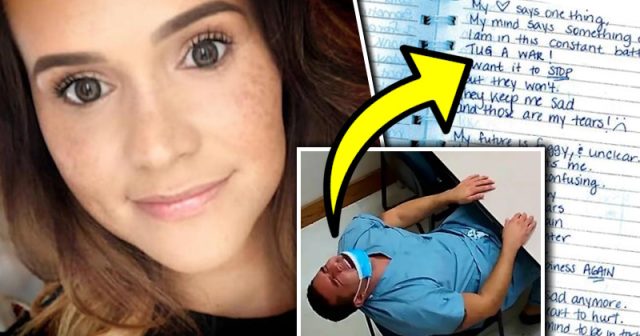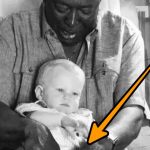When a Texas mom died of an apparent suicide attempt, police immediately became suspicious. As evidence began to mount, pointing to homicide, the deceased would become a key witness in her own murder investigation.

Maria Eugenia Muñoz, the wife of Joel Pellot and mother of his two young sons, was just 31 years old when her life was tragically cut short by an alleged suicide. It was the early hours of September 22, 2020, when Pellot, a nurse anesthetist, called 911 to report that his wife of 10 years was unresponsive. According to the husband, he believed she had committed suicide by overdosing on pills, but police weren’t buying it.
Right away, police became suspicious, thanks to Pellot’s behavior and his explanation of the events that led to his wife’s death. Not only was Pellot sweating profusely when questioned, but he also couldn’t answer simple questions about when and how he found his wife. Then, authorities found a syringe wrapper on the floor and a needle catheter on the stairs, according to the NY Post.
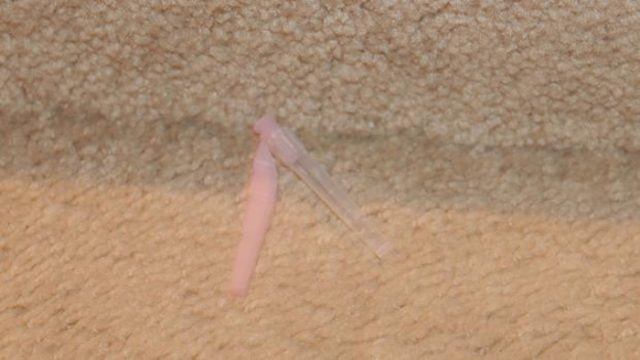
Things weren’t adding up. When investigators turned to Muñoz’s journal with pages and pages of entries, they found no evidence of suicidal thoughts. Instead, Muñoz’s own words painted the picture of a woman who was looking forward to moving on after the man she had loved so deeply — her husband of 10 years — had been caught cheating on her.
According to investigators, it was discovered that Pellot had been seeing Janet Arredondo, a woman from his work, for two years. In fact, Pellot was living with Arredondo at the time of his wife’s alleged overdose. But, Pellot tried to explain it away, saying Muñoz knew about his relationship with Arredondo “for a long while.” However, that did nothing to explain what the medical examiner uncovered.

On medical examination of the body, it was discovered that Maria Eugenia Muñoz had absolutely no pill residue in her stomach — a finding that made no sense, considering the alleged suicide by pill overdose. What’s more, the medical examiner discovered a tiny puncture mark on Muñoz’s right cubital fossa, which is the inside surface of the elbow joint between the upper arm and forearm.
Although the medical examiner determined that Muñoz did die from “a mixed drug intoxication,” suicide was ruled out after a look through the young mother’s journal entries and speaking with her friends. “What is it that I want? #1 Move forward,” Muñoz wrote in her journal the day before she died. Then, as evidence continued to point towards homicide, the head detective on the case got an interesting call.
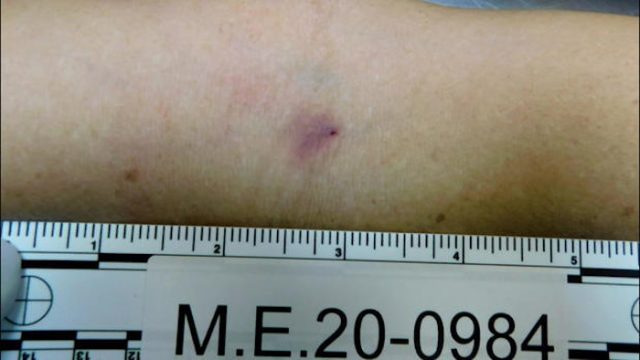
After learning of the autopsy results, anesthesiologist Dr. John Huntsinger, Pellot’s former boss, called authorities to tell them that he was suspicious and suggested investigators consider doing a full toxicology screening. The screening was performed, and four months later, the results came back, revealing Muñoz died from a fatal combination of morphine, Demerol, Versed, propofol, ketamine, lidocaine, and Narcan.
Almost all of the drugs found in Maria Eugenia Muñoz’s system were typically used in surgery, meaning they were drugs a nurse anesthetist, like Pellot, would have access to. Making matters worse for Pellot, the propofol in her system could have only gotten there one way. It’s only administered by injection, which would explain the tiny puncture mark on the deceased’s right arm.
The amount of propofol in Muñoz’s system would have caused her to stop breathing, and it also happened to be one of the drugs Pellot liked to take home from work to use recreationally, according to his mistress. This evidence, combined with Pellot’s suspicious behavior and statements to police immediately after his wife’s death, helped investigators piece together what actually happened, and it wasn’t a suicide.
Instead, it appeared an innocent woman was killed by lethal injection by her estranged husband. According to prosecutors, Pellot first slipped some drugs into Muñoz’s drink to sedate her. Once she was out of it, he then injected propofol into her arm. After waiting long enough to ensure first responders couldn’t resuscitate Muñoz, he called 911. The only question was why?

Days before Muñoz’s death, she spotted Pellot’s car parked outside his mistress’s house. This led to an argument in which Pellot reportedly berated his wife, cursed at her, and punched the windshield, smashing it. The next morning, Muñoz texted Pellot about hiring a divorce lawyer.
After receiving his wife’s text, Pellot responded, “We can do this with minimal lawyer intervention. It’s too much money.” Then, a bit later, he sent his wife an email, in which he asked her to sit down and talk without arguing. “I am so sad I am hurting inside,” Pellot wrote in the email to Muñoz.
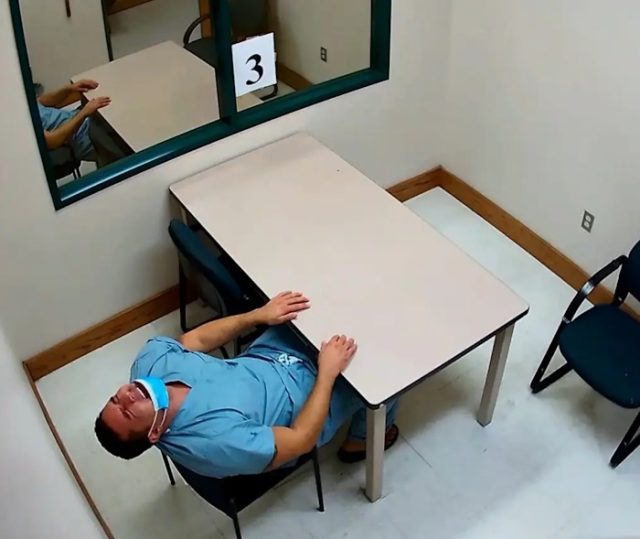
Maria Eugenia Muñoz agreed to meet Joel Pellot for the “heart-to-heart,” but first, she messaged a friend for prayers before sitting down with him. “I just ask if you can pray for me,” she wrote, adding, “tonight we are going to talk.” Sadly, that was her final message to her friend as she died early the next day at the hands of her unfaithful husband.
Maria Eugenia Muñoz’s journal became a key part of the testimony in her murder trial and helped convince a jury that she hadn’t committed suicide but was instead killed by Joel Pellot. Thanks to her own words from beyond the grave, Muñoz’s killer husband was convicted of her murder and ordered to serve life in prison.


